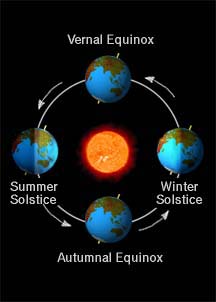The Earth in its orbit at the solstices and equinoxes.
Click on image for full size
The Seasonal Merry-Go-Round
The tilt of Earth's rotational axis and the Earth's orbit work
together to create the seasons. As the Earth travels around the Sun,
it remains tipped in the same direction, towards the star Polaris.
This means that sometimes the northern half of the Earth is pointing
towards the Sun (
summer), and sometimes it
is pointing away (
winter). These points in
the Earth's orbit are called
solstices.
Notice that when the northern hemisphere is tilted towards the Sun,
the southern hemisphere is tilted away. This explains why the
hemispheres have opposite seasons.
Halfway in between the solstices, the Earth is neither tilted directly
towards nor directly away from the Sun. At these times, called the equinoxes, both hemispheres receive roughly
equal amounts of sunlight. Equinoxes mark the seasons of autumn and
spring and are a transition between the two more extreme seasons,
summer and winter.
You might also be interested in:

NASA recently started making images of the entire surface of the Earth every month. There are no clouds in the images. They combine many pictures taken at different times when the weather is clear in different
...more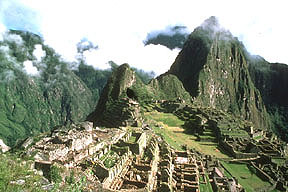
Peru's new president, Alejandro Toledo, was sworn in on July 28, 2001. The next day he visited Machu Picchu and Cuzco. There were ceremonies at both locations where Toledo asked for the blessing of the
...more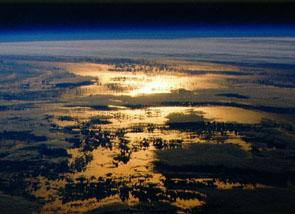
If a body (like the Earth) is orbiting around the Sun, we say it is closest to the Sun at perihelion and farthest from the Sun at aphelion. In 2000, perihelion for the Earth was on January 3, 2000, and
...more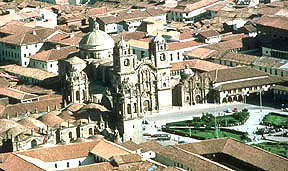
Cuzco is located in Southern Peru. It is the ancient capital of the Inca Empire. It is the oldest, continuously occupied city in the Americas. In ancient times, Cuzco was the ceremonial capital and hub
...more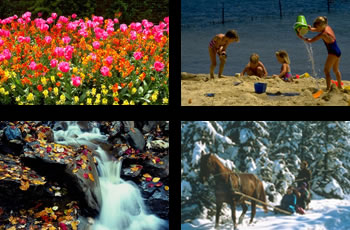
Let's get rid of some common misconceptions about the seasons. The Earth's orbit is in the shape of an ellipse, so that sometimes the Earth is a little bit closer to the Sun than at other times. Is this
...more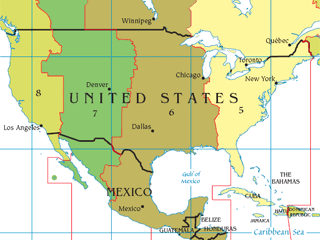
When it is noon where you live, it is midnight on the opposite side of the world. Usually when we think of time, we mean "the time of day where I live". If we say something happened at 9 AM, we mean it
...more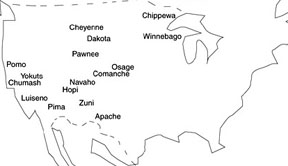
People from Asia crossed the Bering Strait into North America. These people were first in this new land and so they are known as Native Americans. Over time, these people broke into tribes (as seen on
...more


